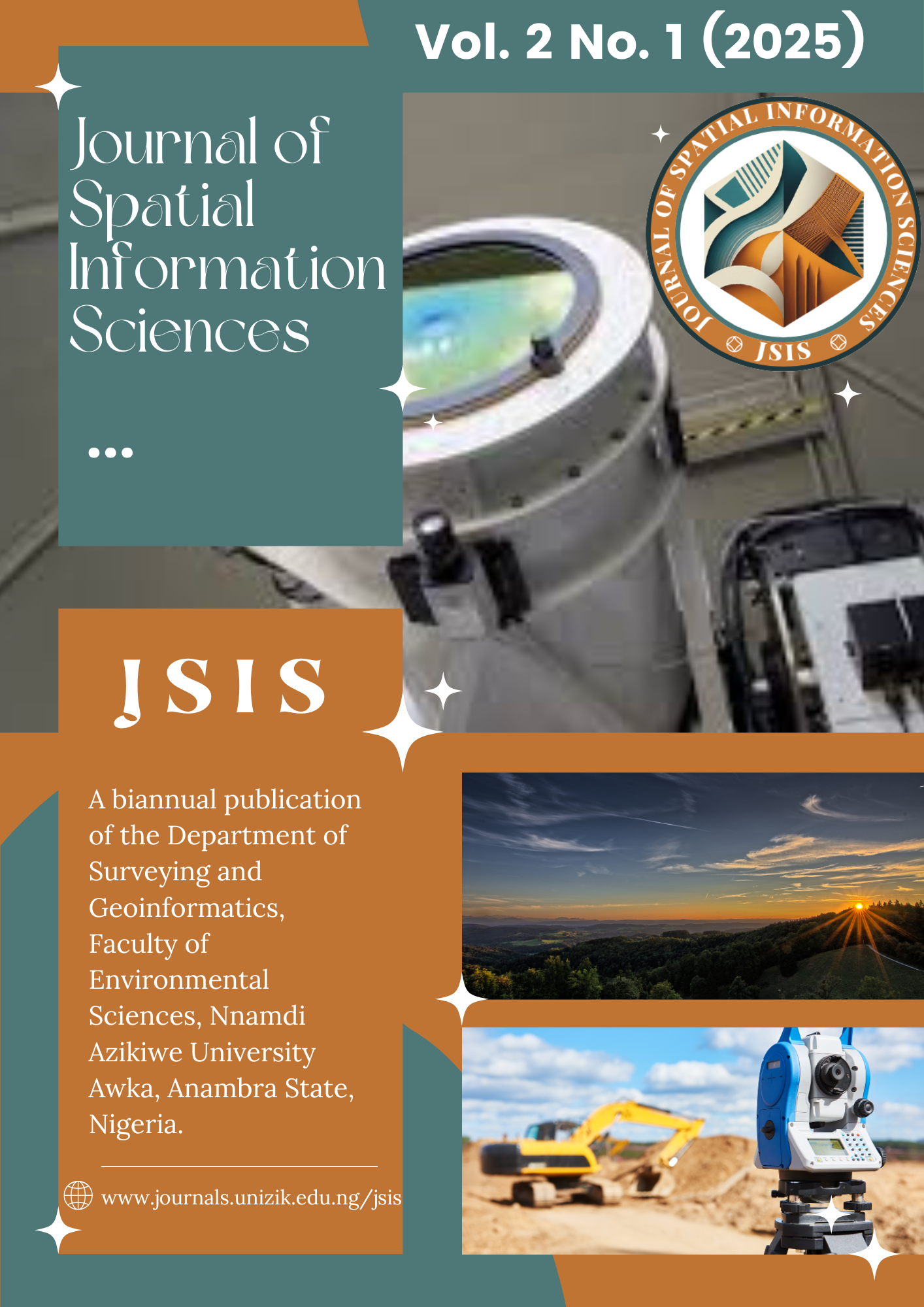A Computational Tool for Local Gravimetric Geoid Determination Using Least Squares Collocation
DOI:
https://doi.org/10.5281/zenodo.14961951Keywords:
Computational tool, Gravimetric geoid, Least Squares Collocation, Molodensky model, TUIDOTAAbstract
This study presents a computational tool (TUIDOTA), for determining local gravimetric geoids using Least Squares Collocation (LSC) techniques, essential for geodetic applications. The geoid provides a reference surface for determining the height of the earth's surface. The study focuses on evaluating the potential of the tool within Akure South Local Government Area in Ondo State of Nigeria, representing mountainous terrains. High-quality terrestrial gravity data, geopotential, and digital elevation models were used. The developed tool facilitates the selection between SLSC and NSLSC, making computations and output visualization straightforward. Results included geoidal undulations, processing time, and geoidal maps. For the pairwise comparisons of geoidal undulation, this indicates that the difference between (SLSC) and (NSLSC) techniques is not statistically significant, having a mean difference of -0.020m (SE = 0.036m, p = 0.567) and a 95% confidence interval of [-0.090m, 0.049m]. This result remains consistent under a 99.9% confidence interval, which spans [-0.137m, 0.097m]. However, for processing time, there exists a highly significant difference between the two techniques. The SLSC technique was 30.459 seconds faster than the NSLSC (SE = 0.000, p = < 0.001) , with a confidence interval of [-30.459, -30.459] in terms of both 95% and 99.9% levels. Also, using the GGM dataset for both approaches, the standard deviations for both approaches yielded 1.538476m and 1.538454m respectively. Furthermore, using the DEM dataset for both approaches, the standard deviations for both approaches yielded 0.943200m and 0.943198m respectively. TUIDOTA proved to be effective, accurate, economical, and user-friendly, and it is hereby recommended for local geoid determination.
Downloads
Published
Issue
Section
License
Copyright (c) 2025 A. A. Tukka, H. Tata, O. T. Idowu

This work is licensed under a Creative Commons Attribution-ShareAlike 4.0 International License.





